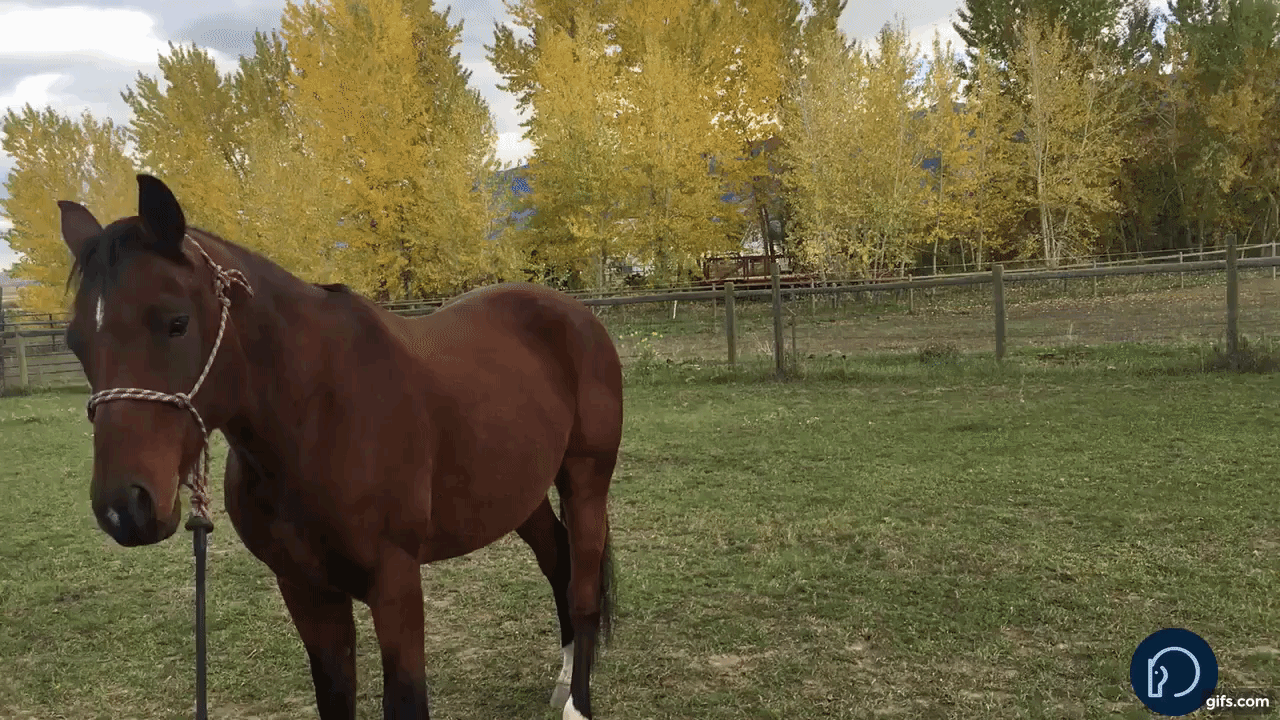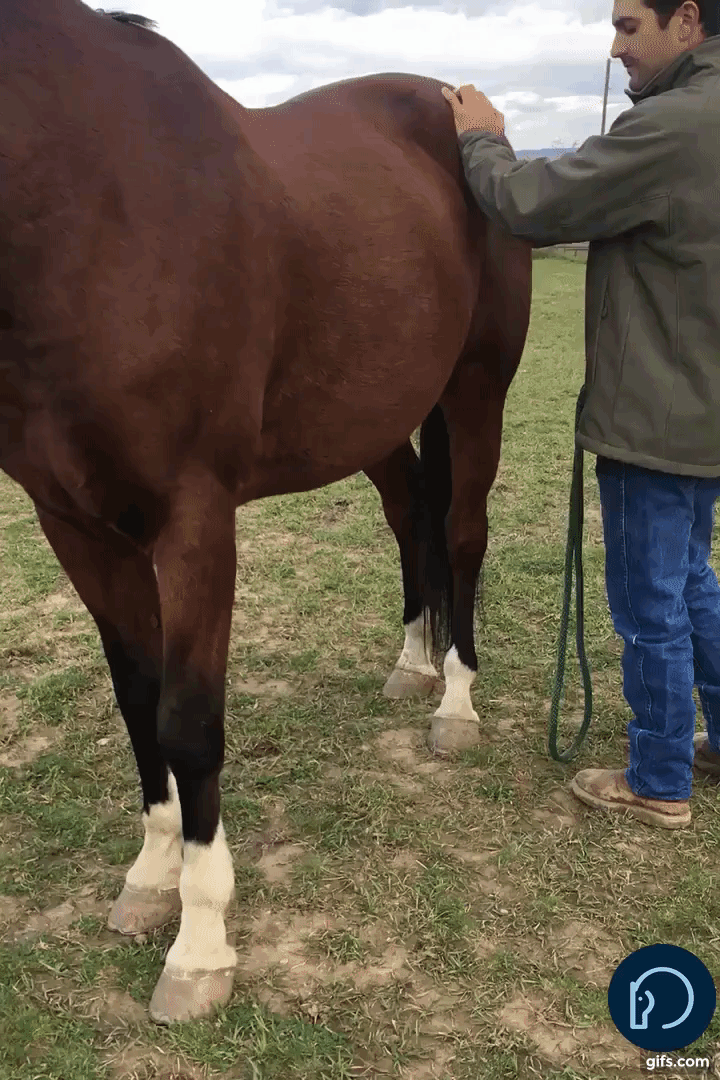The advantage of a horse’s powerful hindquarters is that one lightning-fast hoof strike can end an argument with a mountain lion. Instantly.
The drawback of that fact is that when people are involved, the outcome of such a kick, intentional or not, can be catastrophic.
And until a horse is taught differently, the actions of humans (and hammers and plastic bags) will be interpreted as potential threats as well. While many equestrians claim to know that desensitizing and training a horse is important, they often overlook critical steps that make a horse safer when it comes to handling the hindquarters area.

A horse that is goosey near its hind end is a problem horse waiting to become a monster. Misbehavior, whether based out of fear or disrespect, can often escalate into a “blow up” incident that puts people in direct danger. The consequences may or may not affect the owner. The more likely reality is that the individuals who confront bad behavior are those who are providing a service for that horse, such as farrier work or veterinary care.
If a horse does not tolerate a farrier putting on hind shoes or a vet trying to scrub a laceration on a hind hock, a highly qualified professional will walk away when the behavior becomes a threat to their personal safety. It is not their responsibility to train that horse. Nor should they feel obligated to jeopardize their career by risking an injury.
Everyone loses. The horse does not get the help it needs. The farrier and vet are unable to do their jobs. The owner is now up a creek without a paddle because equine professionals don’t want a horse like that for a client.

©Flickr/RichardWalker
Here is a common misconception: An owner thinks that their horse has sufficient ground manners because it stands calmly while being saddled or doesn’t pull while being led out to pasture. And then that same horse strikes a farrier who is nailing a shoe on its right hind.
What I have found is that if you take a horse like that and work on desensitizing and training exercises that only relate to the hind end, the holes will become apparent. A scared horse will act defensively because it feels reliant on its hind end for protection and does not trust in vulnerability. A spoiled horse will act out with aggression because it is accustomed to using the hind end to assert its dominance and win a power dynamic.
Horses are only as good as the work we put into them. If we don’t help them to understand our expectations, they will not be successful. There are many indications that a horse has proper ground manners when it comes to their hindquarters area. The five “big ones” are listed below. The horse photographed, Monty, has had extensive groundwork training for many years—a farrier’s or vet’s “dream” horse. His behavior is a good model of what to look for when working through different exercises.
1. I like to look for proper disengagement of the hindquarters, as seen by the crossing over of the back hind leg. By asking a horse to yield to pressure, you reinforce compliance on their end and leadership on yours.

©Anna Carroll

©Anna Carroll

©Anna Carroll
2. I work to build trust so that the horse keeps a calm demeanor when someone approaches its hind end, no matter the speed. This attitude should be maintained while anybody is moving around that area, both in and out of their line of sight.

3. Acceptance of both a “busy” and “slow” touch—from hip, to tail, to hoof, and especially in the vulnerable underbelly area. The horse should be able to let go of the protective or territorial instincts that could put someone in harm’s way if acted upon.

©Anna Carroll
4. The horse should not spook or threaten to lift its leg whenever fly spray is applied. Flies that hover on hind legs make a horse more willing to kick and so having the ability to get rid of them pays off.

©Anna Carroll
5. When asked, the horse should submissively give their hind foot into the hand of the individual asking. Both horse and person should be able to keep a comfortable posture and demeanor while doing so.

©Anna Carroll

©Anna Carroll
TIP: Holding a lead rope around the fetlock and asking for a horse to lift its foot when pressure is applied is a good intermediate step to teaching this.

Strive for a relationship with a horse that is based on mutual respect. No matter the exercise completed in the hindquarters zone, the end goal should always be relaxation and trust. Maintaining these standards will go a long way in educating a horse as well as making it safer to be around. If you are not comfortable handling a horse who has demonstrated unsafe or nervous behavior, then find a knowledgeable person who can help. Whatever you do, don’t just ignore it!

To make the final positive difference, engage in routine. Routine helps a horse to learn better and remember longer. When it comes to the hind end especially, it is not fair that when your farrier makes his once-every-eight-weeks visit, the experience is a total surprise for the horse. If loud tools, lifting the hind leg, and suspicious smells are new, sudden, and not part of daily expectations, the horse will probably feel justified in behaving badly. Including basic hindquarters groundwork in a daily routine has other advantages as well. For example, if an emergency injury occurs somewhere near the inner hind leg, a horse’s baseline trust and acceptance will improve your chances of being able to safely treat the wound, either on your own or with the help of a veterinarian.

©Anna Carroll
No matter the discipline, it is an essential responsibility of a horse owner to improve a horse’s attitude and behavior on the ground as much as possible. Horses are unpredictable, even on their best day. So don’t skip basics—no one wants to get hurt over it!




 October 18, 2016
October 18, 2016 






















